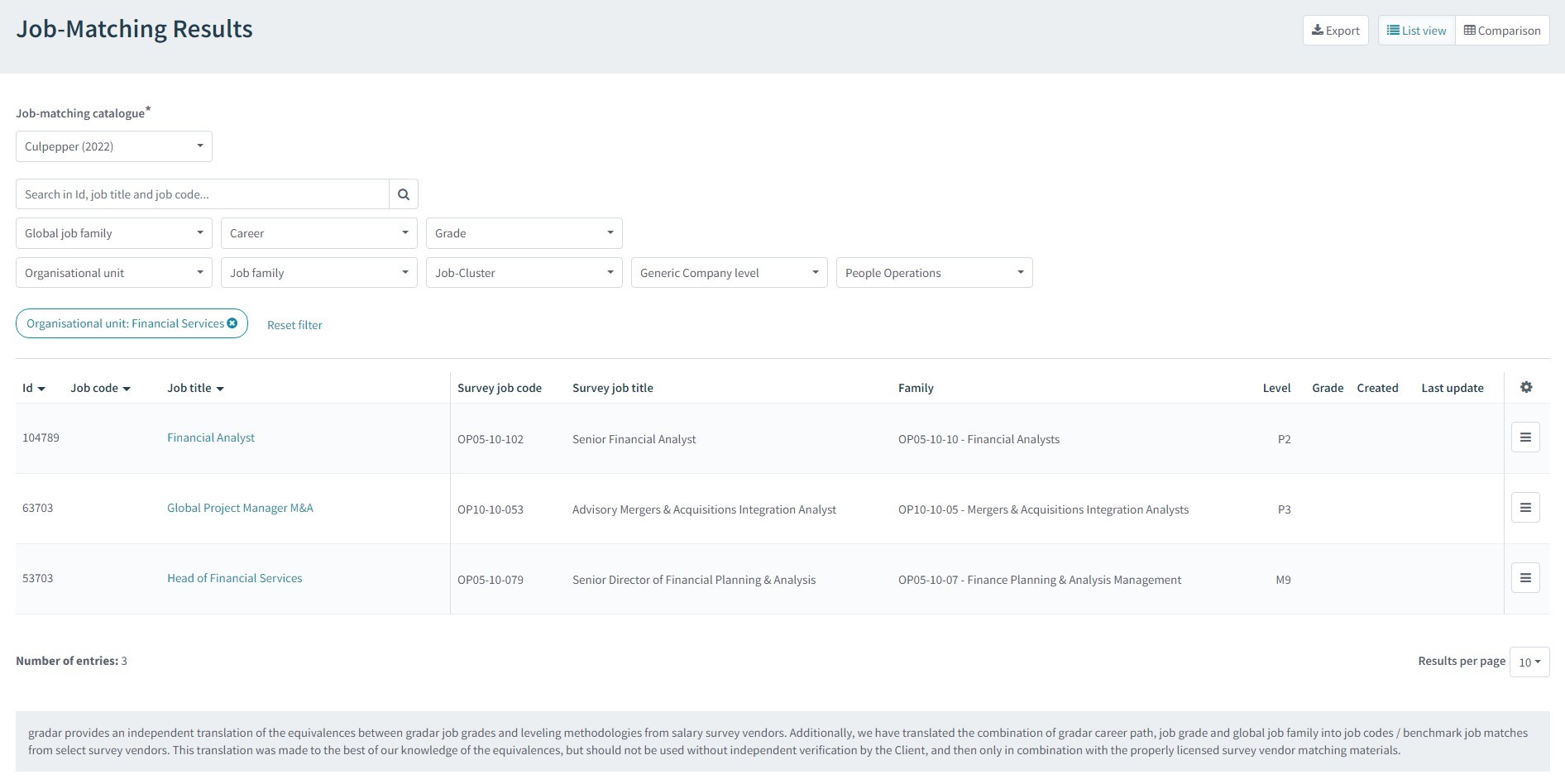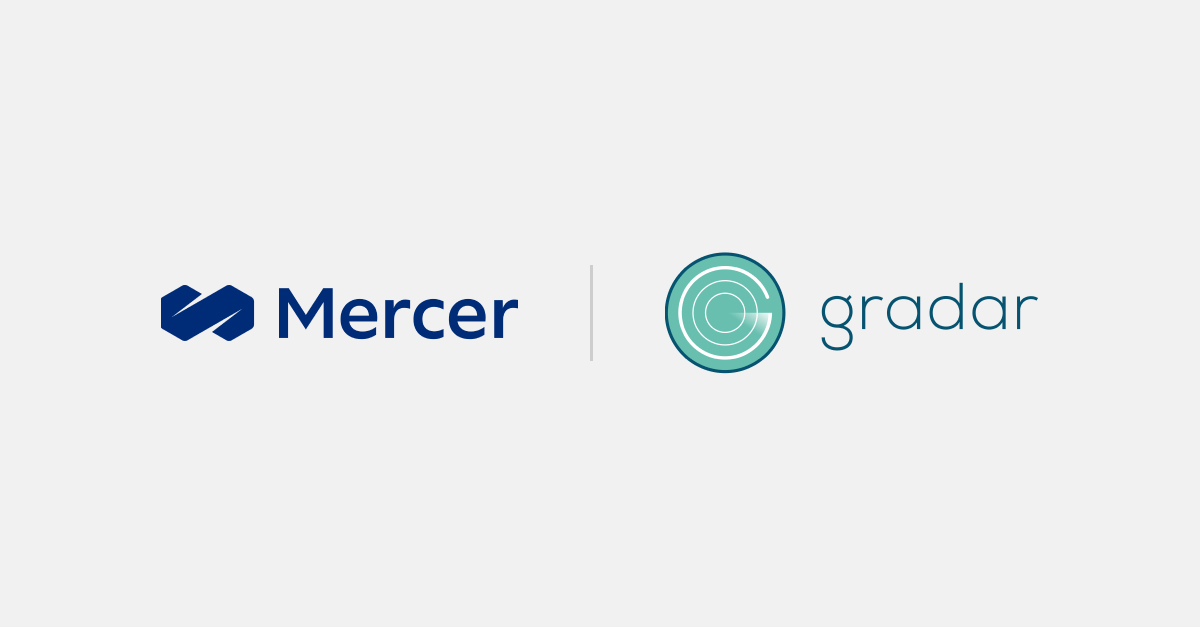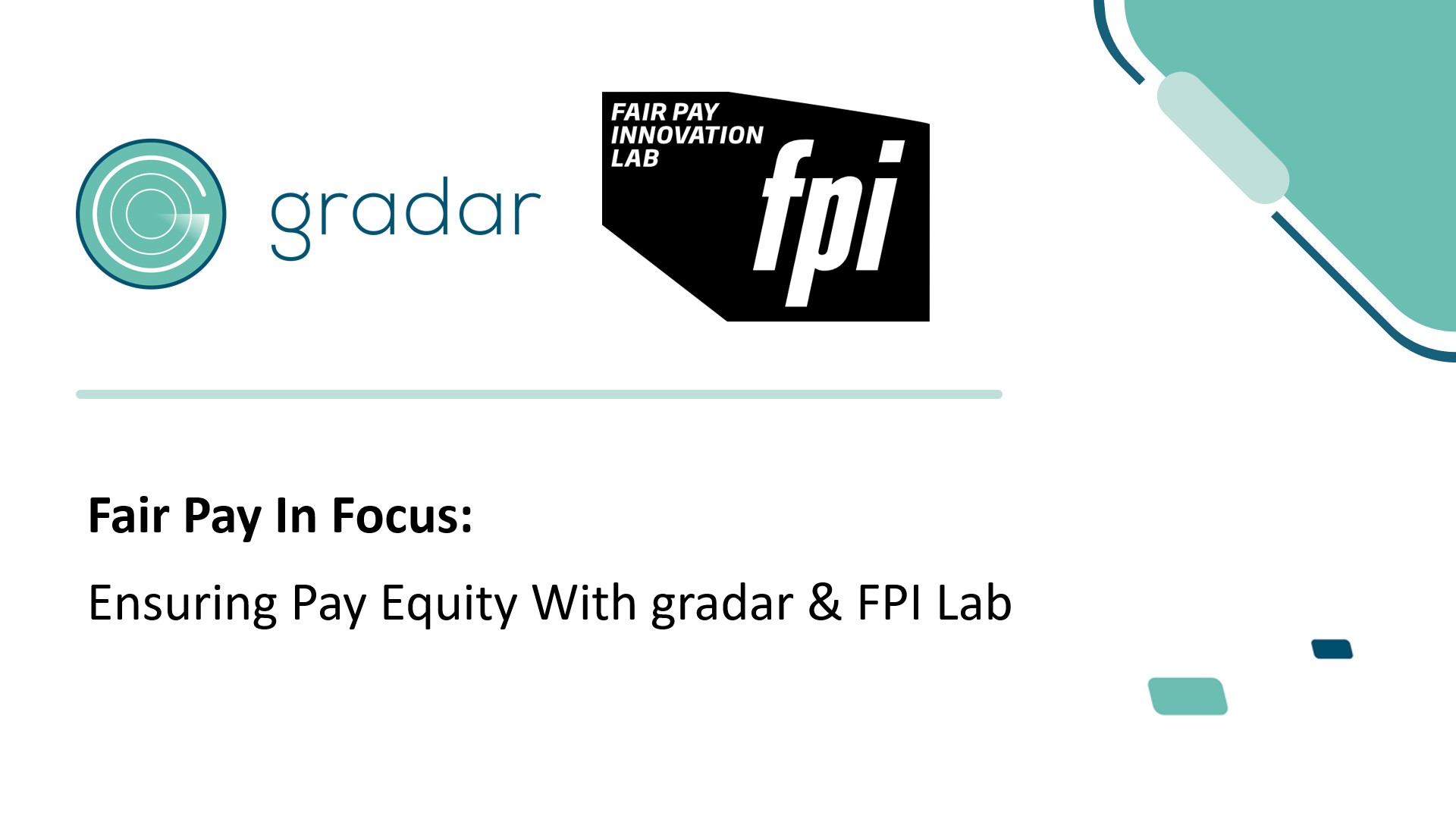What is job matching?
If you’re already familiar with gradar and what we do, you’ll know that our complete job evaluation system provides organisations with the foundations for vital HR processes such as compensation structuring and hiring and managing talent.
At the core of the system, gradar evaluates jobs by splitting them into three career paths before calculating a grade between 1 to 25 using a data-driven algorithm. Each job is also organised into one of our 450+ global job families.
One of the most innovative key features we’ve built directly into the gradar system is our job matching module. Essentially, it allows businesses to efficiently and consistently match their roles to benchmark levels from a huge range of global and local salary surveys.
How does job matching work in gradar?
Using our Rosetta Stone matrix, a read-across compensation survey table backed by years of research and use, our experts have manually matched equivalent jobs at each level. The result of all this hard work? gradar users can easily match their own roles with roles in the salary survey catalogues of multiple global and local providers. A specific survey code represents a job match, bridging the gap between gradar and market data.
Organisations can then opt to unlock the market data, within the gradar system, by buying it from the provider. Seamlessly, they can subsequently view a whole host of benchmark data - including median and average base pay and target total compensation - of similar companies. This can be either displayed on the job profiles or be viewed as a detailed report - all within the gradar system.
This automated, end-to-end job matching is a serious time-saver for organisations. Instead of hunting down relevant salary surveys and spending time matching up equivalent roles, HR professionals can get their hands on the information - displayed clearly and intuitively - in just a few clicks.

Why is job matching useful in relation to salary surveys?
Salary surveys are an essential benchmarking tool. They give organisations the information they need to set appropriate, competitive salaries that align with market rates.
Salary surveys collect and analyse quantifiable employee data such as base salary, incentives, bonuses and work hours. Comprehensive pay surveys will also include non-quantifiable aspects such as geographic location, educational requirements and sometimes even working conditions, if they’re relevant.
By being able to accurately match the roles in their organisation with other equivalent jobs at similar companies, HR professionals can ensure that they are not under- or over-paying for certain roles - even if the job title may sound vastly different.
Essentially, accurate salary benchmarking is essential for companies who want to hire and retain top talent whilst carefully managing their staff budget. And the great news is, gradar is making it easier than ever with an updated module built into the existing gradar system.
Introducing gradar’s new job matching 2.0 functionality!
Here at gradar, we’re seriously excited to introduce our Job Matching 2.0 update. Cutting edge and powered by AI, our new-and-improved job matching module allows gradar users to match grader global job families with the job families of benchmark catalogues.
Why is this big news? Because it means that both the quality and number of unique automatic job matches have increased significantly. It also streamlines the entire process whilst simultaneously giving gradar users even more control.
First up, we’ve expanded the matching capacity by providing matching ranks. This means alternative matches - ranked based on their similarity to the evaluated job as primary or secondary matches - can be given if available.
We’re also building in increased efficiency and more control. When the vendor’s catalogue allows for it, each new catalogue will come with automatic fallback matches designed to improve your experience working with market data.
If the uploaded catalogue contains fallback / roll-up aggregation of market data and there is no data available for the unique match, gradar will automatically ascend the levels of aggregation from a single job in a specific job family to the parent job family and then to the general level until market data is available.
This seriously streamlines the matching process and reduces the amount of manual intervention needed to find matches. Here's an example:
HRM-COB-000-IC-12
HRM-COB-IC-12
HRM-IC-12
IC-12
12
In parallel, we’ve also expanded the advanced edit options. This gives users the control to select from primary/secondary matches or career path alternatives and deliver a full manual match with user-defined fallback matches.
Finally, we’ve expanded the Rosetta Stone matrix to allow for conditional career path and level matches. Now, when vendor levels overlap (such as between career paths or between Manager and Executive levels) the gradar system can provide a unique match that takes the overlap into account.
Ultimately, the Job Matching 2.0 update combines the most cutting-edge human expert knowledge with a purpose-trained AI model. So, you can be more confident than ever in gradar’s job matching power and efficiency.
Sounds like there’s a lot of big things going on at gradar? That’s because there is! If you want to experience the update for yourself, you can get a private tour of all of gradar’s exciting features with one of our experts. Just get in touch with our support team today.




